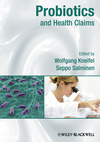Probiotics May Repair Intestinal Lining

The results demonstrated a mechanism by which bacterial cultures in foods such as yogurt and kimchi have beneficial effects on intestinal health. The insights gained could also guide doctors to improved treatments for intestinal diseases, such as necrotizing enterocolitis in premature babies or intestinal injury in critically ill adults.
“It’s been known for years that probiotic bacteria can have these kinds of helpful effects, but it wasn’t really clear how this worked,” said Andrew Neish, professor of pathology and laboratory medicine.
“We’ve identified one example, among many, of how certain kinds of bacteria have specific biochemical functions in the body,” added Neish.
The researchers showed that Lactobacillus rhamnosus bacteria can accelerate this healing process, both in culture dishes and in mice with intestines damaged by chemicals. Lactobacillus rhamnosus, a species of bacteria found naturally in human intestines and often used as a probiotic, is a relative of other kinds of Lactobacillus bacteria found in fermented foods.
"Unlike most cell types that can not tolerate bacterial contact, intestinal epithelial cells respond to Lactobacillus rhamnosus by increasing their motility,” said Neish.
Using a fluorescent dye that is sensitive to reactive oxygen species (ROS), the researchers showed that intestinal epithelial cells produce ROS internally when in contact with Lactobacillus rhamnosus. The ROS induced by the bacteria stimulate the formation of focal adhesions, structures on intestinal epithelial cells that act as anchors for their movement.
“Focal adhesions are where cells attach to the matrix that surrounds them,” said Neish.
“The cells lay them down on one side and remove them on the other side, like the tracks of a bulldozer,” added Neish.
The study is detailed in Proceedings of the National Academy of Sciences Early Edition.
From the May 12, 2011, Prepared Foods' Daily News.
Looking for a reprint of this article?
From high-res PDFs to custom plaques, order your copy today!





